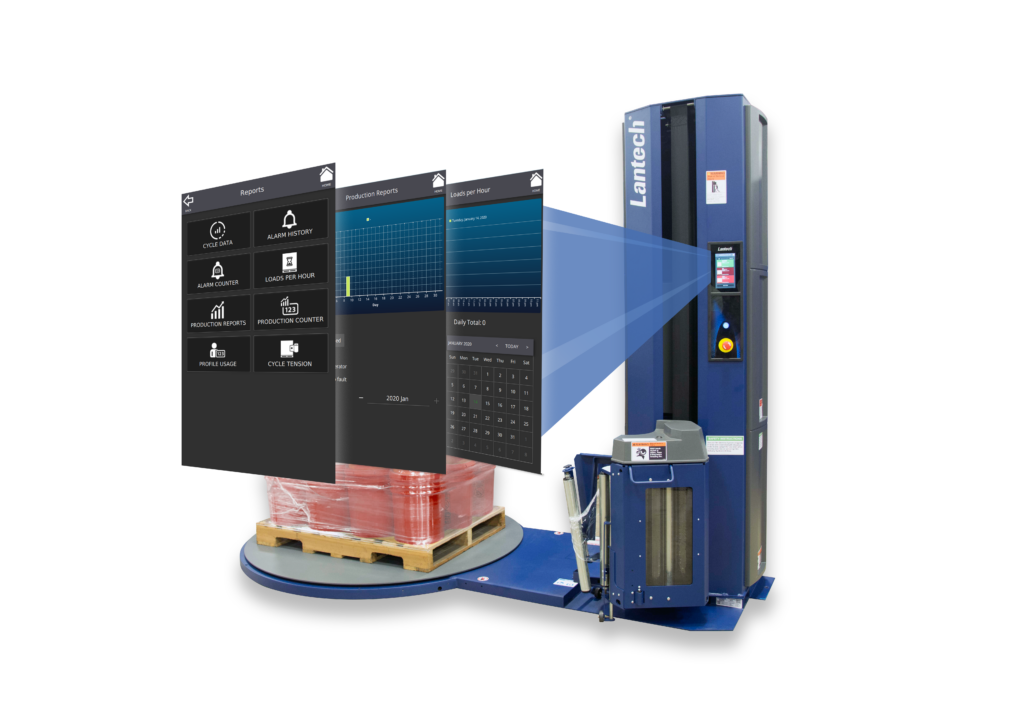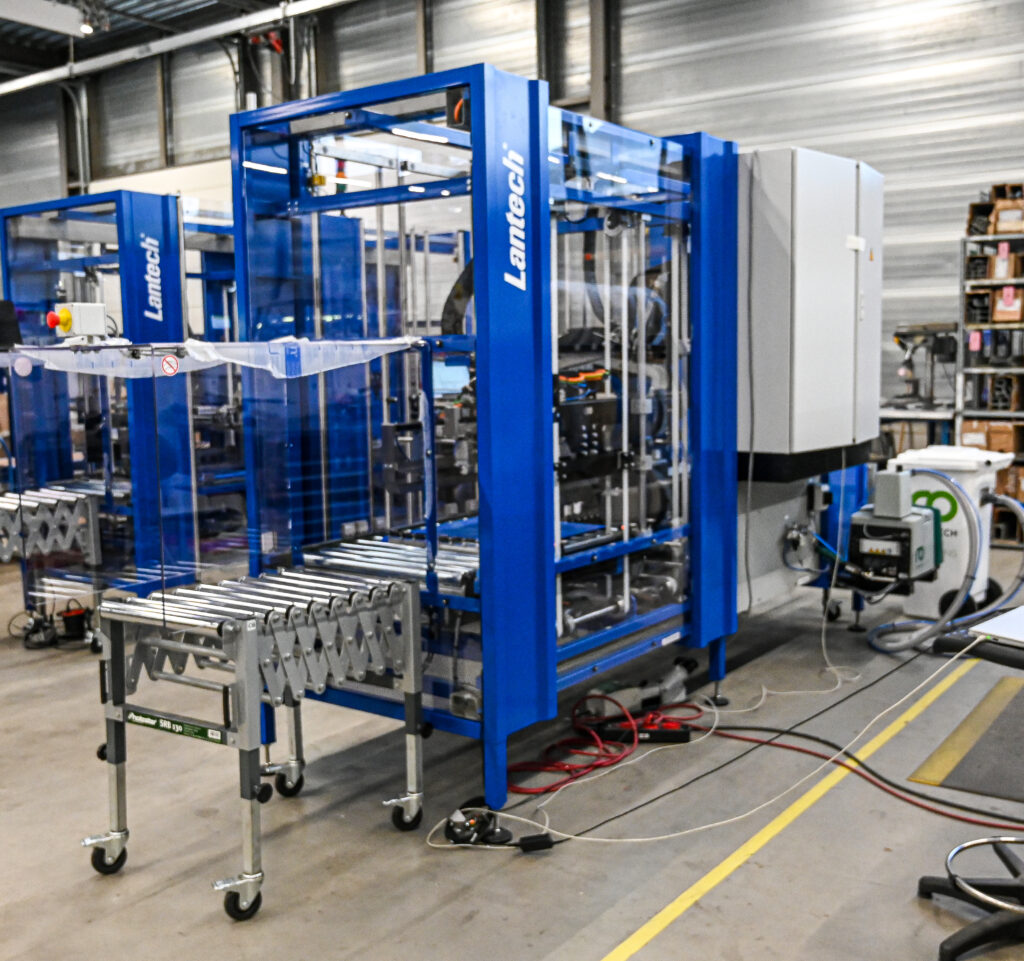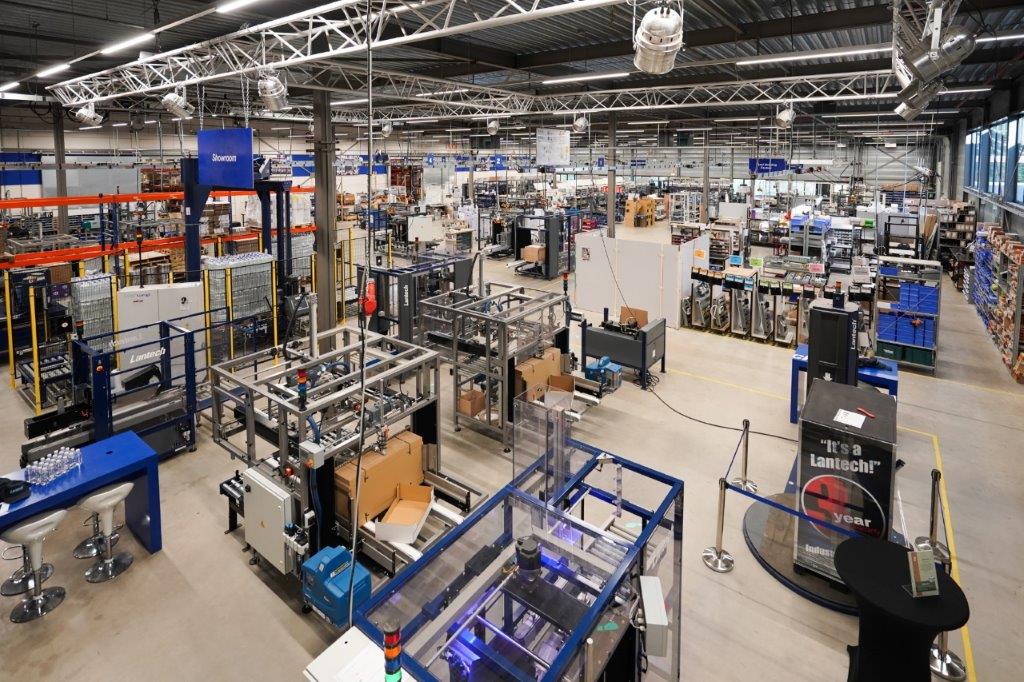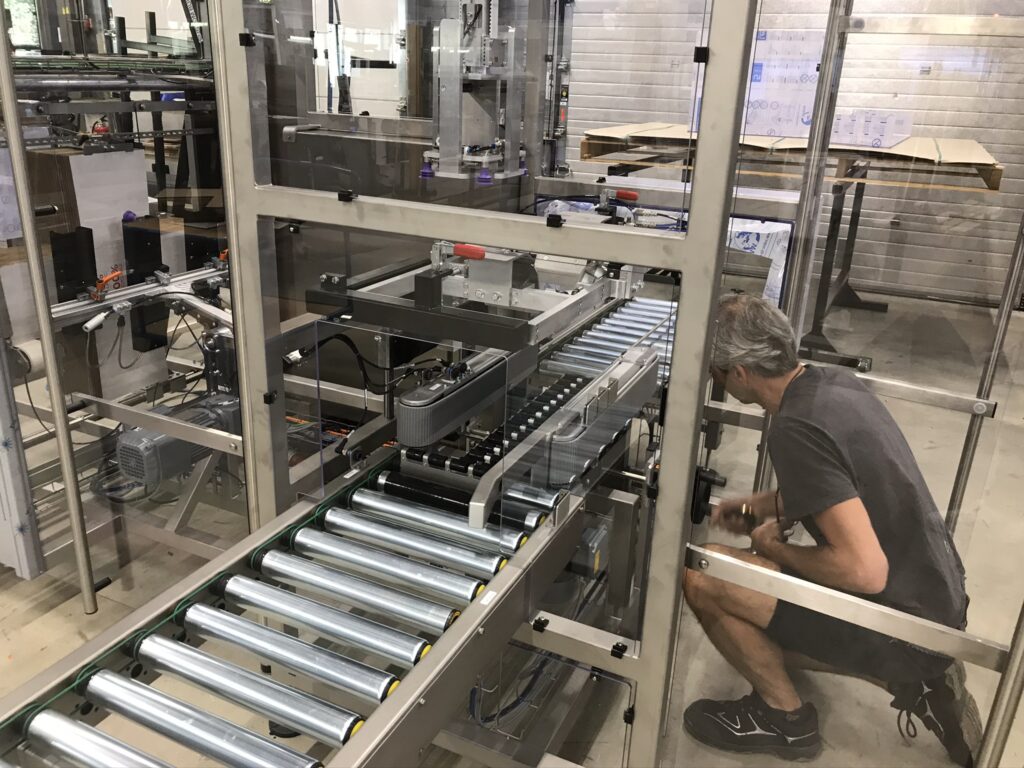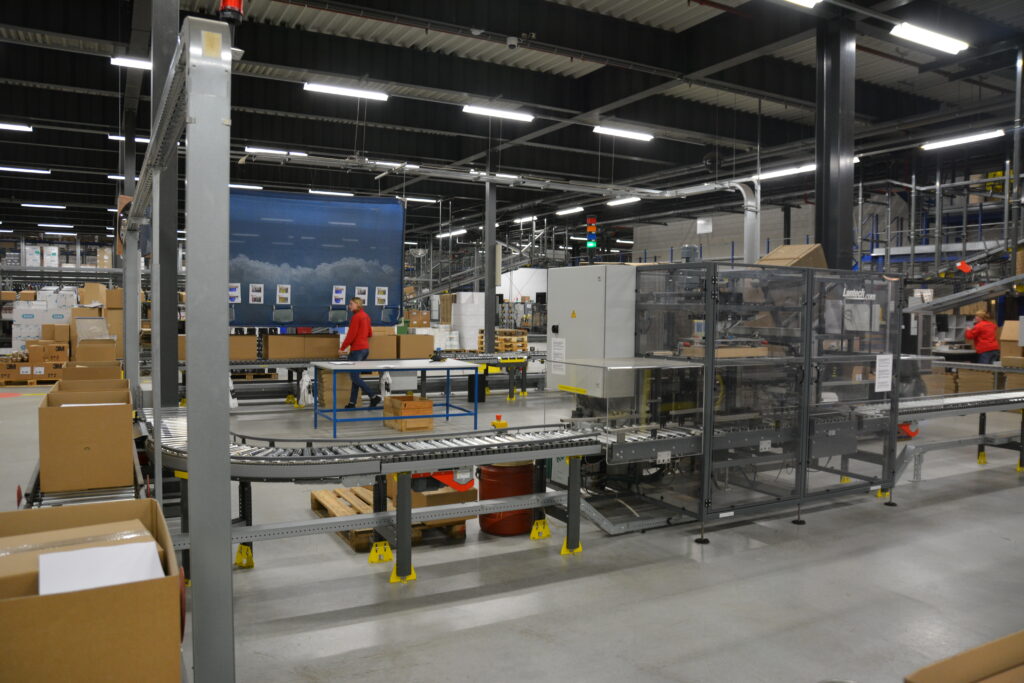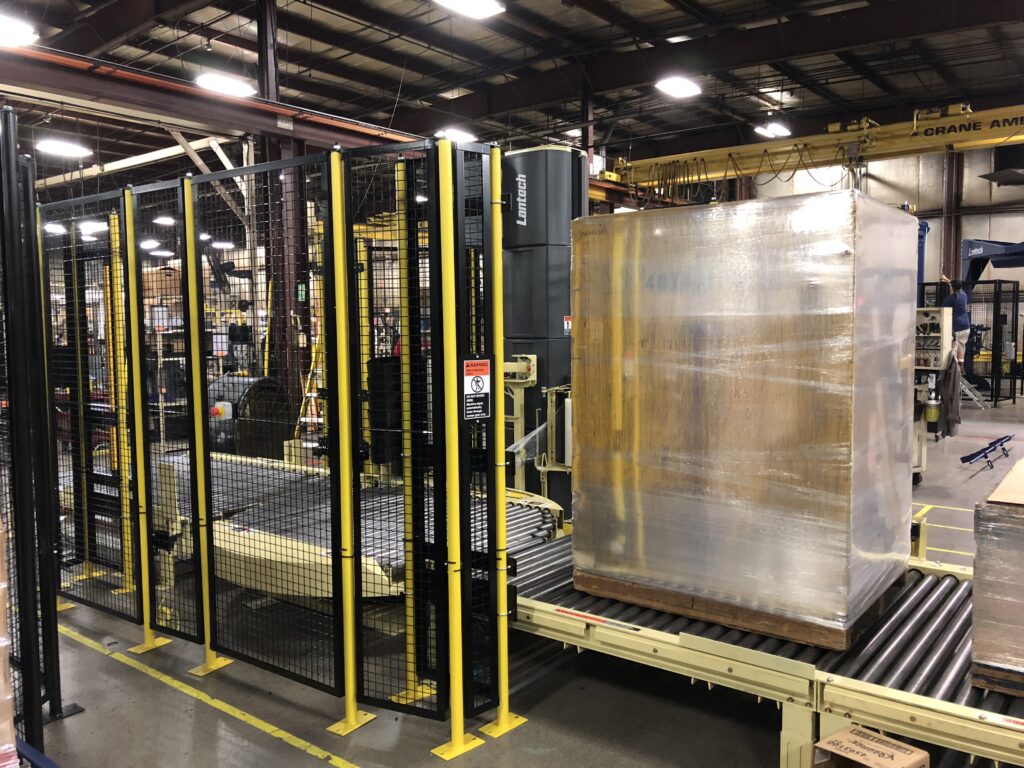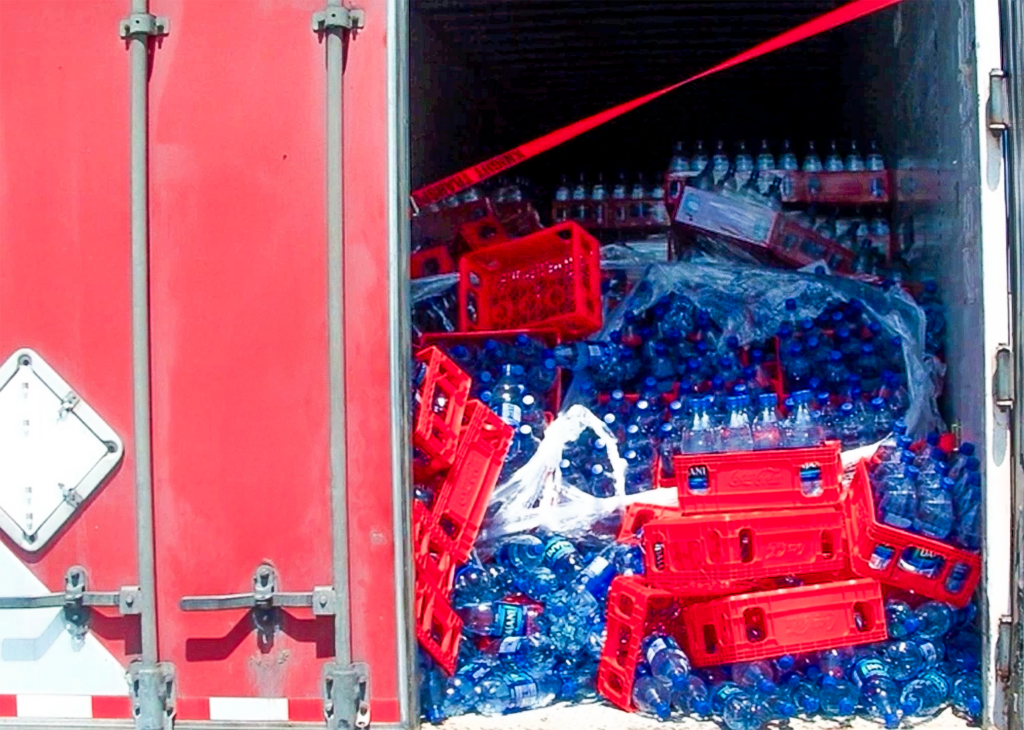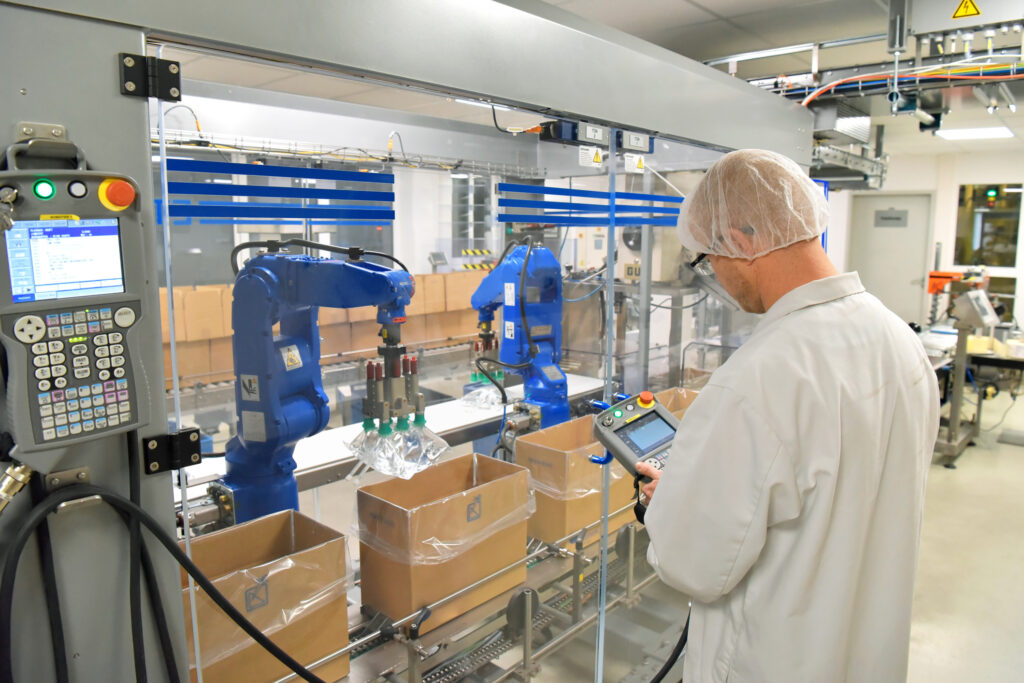This guide is tailored for professionals in logistics, manufacturing, and warehousing who need to understand the differences between a semi-automatic or automatic stretch wrapper. It provides insights into equipment terminology, functionality, and helps in selecting the right type of machine. Readers will gain a clear understanding of when to choose a fully automatic vs semi-automatic stretch wrapper for optimal efficiency.
What is a Stretch Wrapper?
What it is:
A stretch wrapper is a machine designed to wrap stretch film tightly around pallets or loads, securing them for transport and storage. The film carriage applies tension, creating a snug wrap that prevents items from shifting. The stretch wrapping machine plays a vital role in logistics by stabilizing products, enhancing safety, and protecting goods from dust, moisture, and damage during transit.
Where it’s used:
- Warehouses – for securing pallets for shipment
- Manufacturing – to stabilize goods along the packaging line
- Distribution centers – for wrapping pallets ready for delivery
- Retail – to manage bulk shipments efficiently
Difference Between Fully Automatic and Semi-Automatic Stretch Wrapper
Understanding the difference between a fully automatic vs semi-automatic stretch wrapper helps businesses make informed choices based on workload, labor availability, and operational needs. Each type offers unique benefits and limitations, making them suited for distinct scenarios.
Advantages
- Fully Automatic Stretch Wrapper: Operates without manual involvement once setup, ideal for high-volume operations. It allows a seamless wrapping cycle as part of conveyorized automatics, handling large numbers of pallets with minimal labor. These automatic stretch wrapping machines increase efficiency, saving time on large-scale packaging lines.
- Semi Automatic Stretch Wrapper: Requires an operator to load and position the pallet, but still automates parts of the wrapping. These machines are cost-effective for smaller businesses, and they allow for flexibility and ease of use on a smaller scale.
Disadvantages
- Fully Automatic: Higher cost and installation requirements, suitable only for operations with a continuous flow of pallets. Requires space and training, which can be restrictive for smaller setups.
- Semi-Automatic: While flexible and affordable, it requires some manual labor, which can slow down operations in high-volume settings. Additionally, using a pallet jack or fork lift is often necessary for load placement.
Best Use Cases
- Fully Auto vs Semi-Auto Stretch Wrapper: Fully automatic models work best in high-volume, consistent packaging environments. Semi-automatic machines are better suited for smaller warehouses or facilities with varying pallet loads.
Factors to Consider When Choosing Between Automatic and Semi-Automatic
Choosing between a semi-automatic or automatic stretch wrapper depends on various operational needs and conditions. Here are the key factors to consider when selecting the best stretch wrapper machine for your business.
Key Factors
- Volume Requirements: High-volume operations benefit from a fully automatic machine, while lower volumes can be managed with a semi-automatic unit.
- Labor Availability: Fully automatic machines are optimal when labor resources are limited or costly, reducing the need for manual intervention. There are some semi-automatic machines that offer simple automation features to help environments with limited labor availability.
- Budget Constraints: Semi-automatic stretch wrapping machines are generally more affordable and suitable for small businesses with limited budgets.
- Space Constraints: Fully automatic machines often require additional space for conveyors and other equipment, making semi-automatic options more flexible for smaller setups.
- Frequency of Use: Facilities with constant pallet wrapping needs may prefer a full auto vs semi-auto stretch wrapper for efficiency.
- Product Stability: If your loads are sensitive or fragile, a fully automatic machine with controlled tension on the film carriage may offer better protection.
Common Terminology in Stretch Wrapping
Understanding terminology used in the stretch wrapping industry enhances the selection and operation of equipment. Here’s a list of common terms:
- Turntable Stretch Wrappers: Machines where pallets rotate on a turntable as the film is applied.
- Rotary Arm Stretch Wrappers: Machines that encircle a pallet sitting on the ground to wrap it with stretch film
- Film Carriage: The part of the wrapper that holds and tensions the film.
- Wrapping Cycle: The full process of wrapping a pallet from start to finish.
- Conveyorized Automatics: Fully automatic systems with integrated conveyors for continuous wrapping.
- Semi-Automatic Stretch Wrap Machine: A wrapper requiring some manual setup for each pallet.
Conclusions
In summary, choosing between semi-automatic and fully automatic stretch wrappers requires consideration of volume, budget, and operational needs. A fully automatic vs semi-automatic stretch wrapper choice can impact efficiency, labor needs, and space requirements.
A well-suited stretch wrapping machine can enhance productivity and help businesses protect their products effectively. By understanding these options and terminologies, companies can make more informed decisions about their packaging solutions.
FAQ
1. What is the difference between automatic and semi-automatic stretch wrappers?
Automatic wrappers function without manual intervention, while semi-automatic machines require an operator to place or remove the pallet.
2. Which type of stretch wrapper is best for high-volume operations?
Automatic wrappers are ideal for large-scale packaging facilities, improving efficiency and reducing labor costs.
3. Is it worth investing in an automatic stretch wrapper?
For businesses with high packaging volumes, an automatic wrapper reduces labor expenses and improves wrapping quality.
4. What factors should be considered when choosing a stretch wrapper?
Key considerations include packaging volume, load type, automation level, film tension control, and budget.
5. What new technologies are used in modern stretch wrappers?
Modern machines feature pre-stretch film capabilities for material savings, automatic load size detection, and integration with logistics systems.

